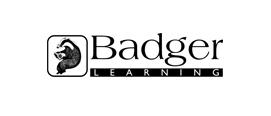Estimating answers
Students are required to estimate number, measures and approximate answers in a variety of contexts, including the checking of results of calculations and other calculation methods. This resource package contains a number of activities in which students are required to use estimation skills to complete the task.
Visit the secondary mathematics webpage to access all lists.
Estimation and Approximation
Estimation and Approximation contains explanations, examples and exercises beginning with rounding numbers to powers of ten, rounding to a certain number of significant figures and rounding to a number of decimal places. The exercise contains many questions set in different contexts such as measuring lengths of rivers, weights of rabbits and length of throws in an athletics competition. Estimation requires students to estimate the answer to a calculation, use a calculator to find the exact answer and compare the two answers before progressing to explain a ‘formal’ method of approximation by rounding each number in the calculation to one significant figure. Different methods of approximation are compared when dealing with estimations involving square roots.
The activity sheet includes an activity in which students have to choose which of the suggested answers is the best approximation to the answer to a calculation.
Counting Trees
This activity requires students to develop a strategy for estimating the number of trees in a forest. Students are given a representation of a forest containing old trees and young trees and have to estimate the number of each type of tree in the forest. This could be used as an introduction to estimating calculations by developing an understanding that an exact answer is not always necessary, even when presented with a calculation containing numbers.
Strategies
This resource asks students to consider the importance of approximating and checking strategies in mental calculations and answers derived from a calculator. At each point students are required to make comparisons between their approximate answers and the actual results.
Students take on the role of evacuating British civilians from Lebanon and are given limits within which they have to work. Students have to formulate a contingency plan for when circumstances change. The activity includes an opportunity for students to present their findings.
Building Yard
This video contains a number of starter activities, the first of which asks students to estimate the length of a brick, the height of a door and the weight of a bag of cement. These brief clips could be used as inspiration for further investigations. For example, by estimating the length of a brick, the number of bricks in one row of a wall can be estimated, leading in turn to an estimate of the length of a wall. This could lead on to the idea that estimating the value of each number in calculation leads to an approximate answer to a calculation.
Maths Starters
The Year Nine starter file contains an activity requiring students to round numbers to make estimates in a geographical context. From the information presented, students are required to round populations and areas of countries in order to find and compare approximations for population densities of different countries.
The Year Ten starter file contains an activity which requires students to choose which numbers should be used in order to find an approximation to a calculation. This activity can be used as teacher inspiration for making similar ones of their own or as an example for students to make up problems to share with peers.




